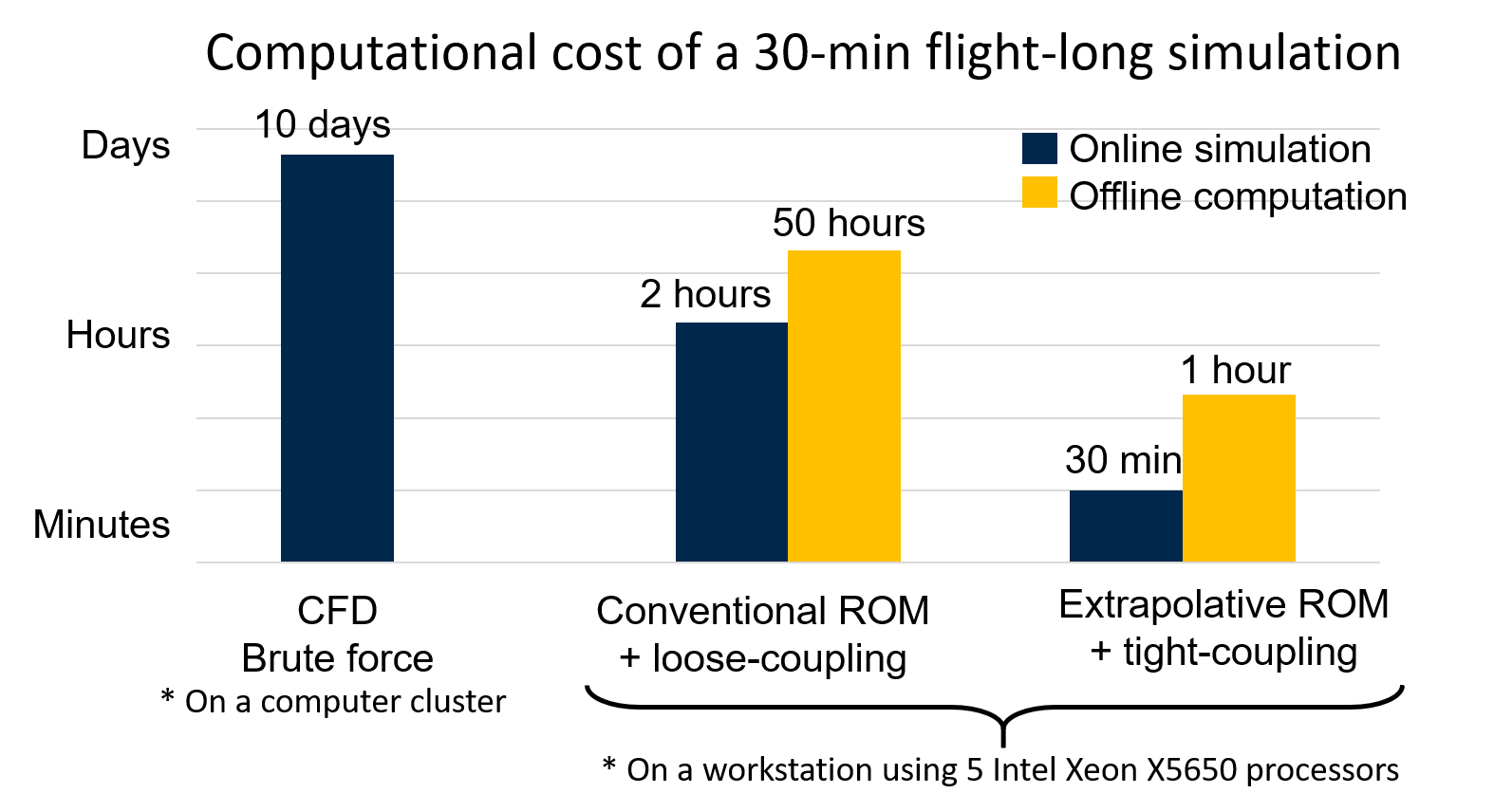Published: Aug 15, 2019 by Daning Huang

A challenge in aerothermoelastic analysis hinges on the computational efficiency needed in the simulation while maintaining high fidelity. The conflict between the requirement of solution fidelity and the computational cost is resolved by utilizing a novel extrapolative reduced-order model (ROM) technique for accelerating the performance of the high-fidelity fluid solver.
Like many other engineering problems, the fluid ROM employs an interpolation model that requires a “training” data set computed prior to the simulation. The interpolation model constructs new fluid solutions from the training data set of CFD-based fluid solutions for a range of presumed flow conditions.

The extrapolation capability of the ROM, which is absent in conventional interpolation models, is supplemented by a novel correction methodology. The correction methodology utilizes simple analytical models pertaining to the underlying flow physics to generalize the interpolation model so that the ROM can generate high-fidelity fluid solutions for the flow conditions beyond the training data set. The correction methodology vastly widens the applicability of the ROM. By using the ROM, the fluid solver is accelerated by five orders of magnitude, while maintaining the accuracy of a CFD solver. This enables rapid simulation of aerothermoelastic problems. Moreover, the ROM correction methodology is a general approach that can be applied to any other engineering problems that employ a ROM based on interpolation models.

Enhanced by the ROM technique, the framework for numerical aerothermoelastic analysis is accelerated by four orders of magnitude. This enables the practical parametric study of the aerothermoelastic behavior of skin panels that sheds new light on the physical understanding of the complex interdisciplinary problem and motivates new design criteria for the hypersonic vehicle structures.
For more technical details on the ROM technique and its application, as well as the access to the ROM code, please refer to our papers SciTech2017 and AIAAJ2019.